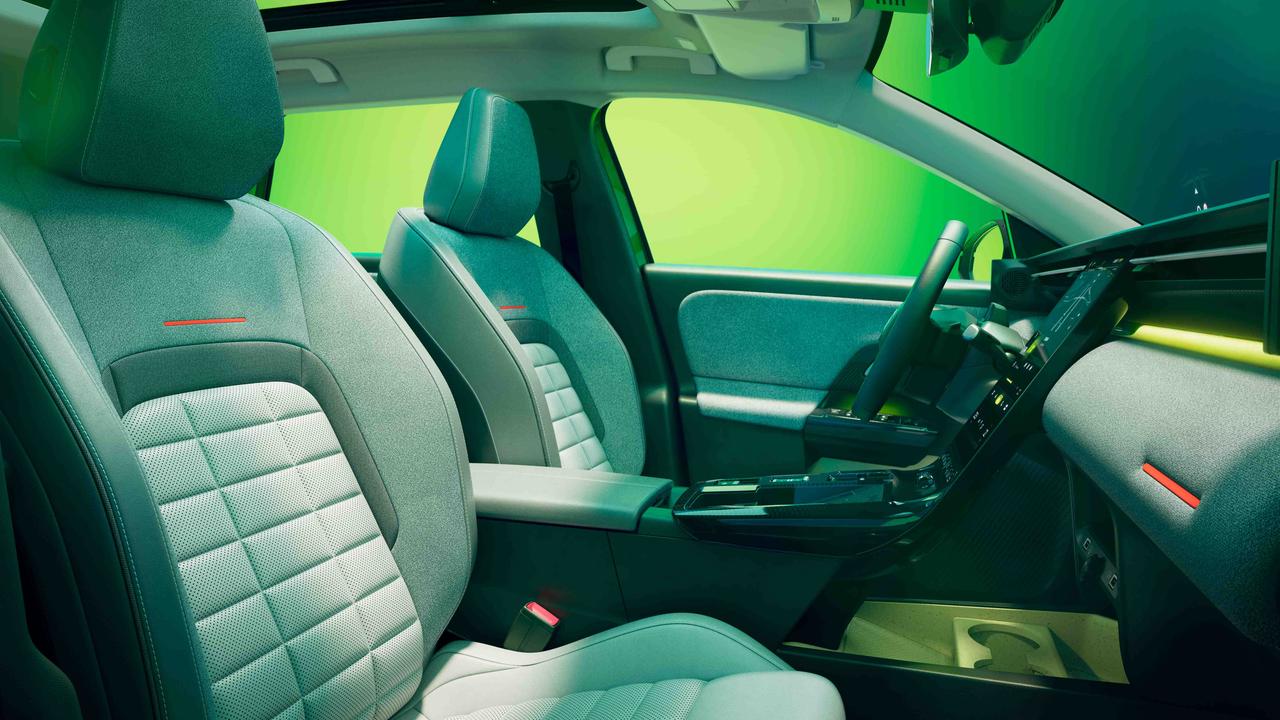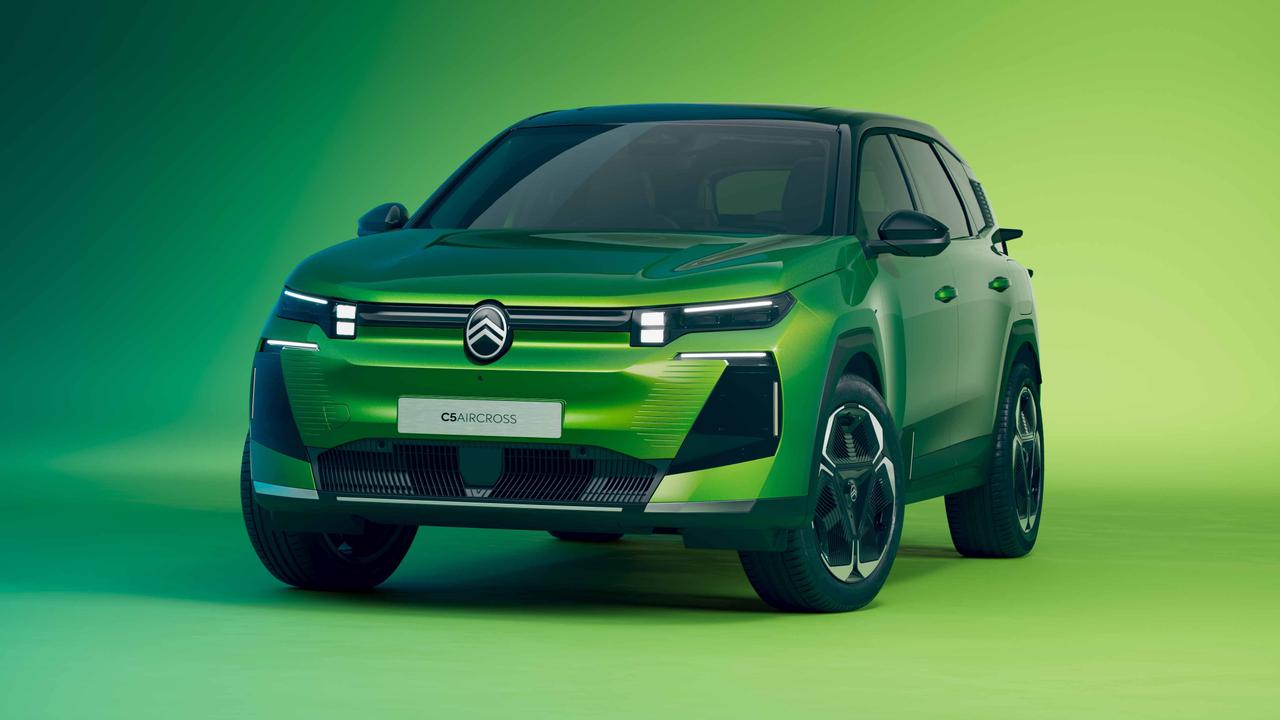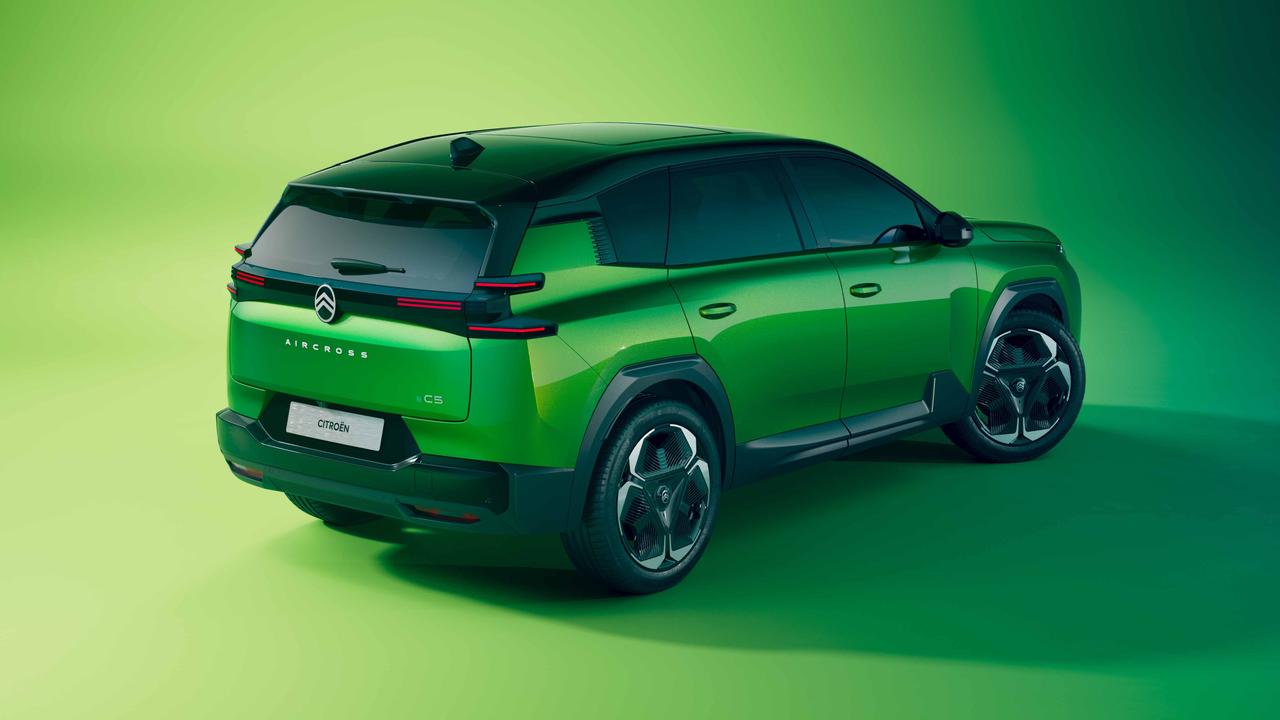On paper, the new C5 Aircross promises to be one of the most impressive family SUVs.
When it launches later in 2025, the new Citroen C5 Aircross will feature several different hybrid and electric options, plus bolder styling and ‘record rear-seat roominess’.
We’re told it ‘represents the best of Citroen’s model range’, which it’ll need to compete against the huge number of talented rivals already on sale, such as the Kia Sportage, Hyundai Tucson, Peugeot 3008, Volkswagen Tiguan, Skoda Enyaq and Renault Scenic E-Tech.
2025 Citroen C5 Aircross prices and specifications

Three trim levels are available in the C5 Aircross lineup, starting with the You! trim (we'll drop the exclamation mark from here). Standard equipment on the You model includes 18-inch alloy wheels, LED headlights with auto high-beam assist, wireless phone charging, adaptive cruise control and 'sofa' fabric. Cosy.
Additionally, the mid-range Plus trim gets premium fabrics in the upholstery, front parking sensors, a reversing camera, ambient lighting, keyless entry and tinted windows.
Max is the top-spec model, and is marked out by a head-up display, heated front seats, a heated steering wheel, an electric bootlid and some semi-self-driving technology.
Prices start from £30,495 for the You trim with the petrol-hybrid engine, with Plus starting at £33,135 and Max starting at £35,775. Electric e-C5 Aircross models start at £34,065 and Plus is £36,705, meaning both meet the threshold for the new Electric Car Grant – should they qualify. We're glad to see that the top-spec EV isn't over £40,000, so it's subject to the standard rate of road tax and not the luxury car tax.
Interior

Citroen has gone for more of a tech-heavy focus in the new C5 Aircross, most notably with a vast portrait touchscreen that cascades into the centre console. The largest touchscreen ever put into a Stellantis product, actually. The top status bar, climate controls and main app functions always stay in place, with the middle section being configurable and able to show a range of functions including media playback and navigation directions.
The touchscreen has been designed to ‘reduce the mental workload’ for you, with pertinent information at your fingertips and clear graphics. Up to eight different driver profiles can be stored, each remembering the preferred touchscreen layout, nav destinations and radio stations of that person.
There’s no leather in the C5 Aircross, and only a limited use of chrome. Citroen has reused 160kg of recycled metal in the C5’s construction and nearly 50kg of recycled or eco-friendly plastics. Some of the plastic includes vine shoots from a Burgundy vineyard, which would otherwise be disposed of by burning. It's the first car in the world to include vine shoots, which is a fun fact to tell everyone you meet.
Dimensions and practicality
| New Citroen C5 Aircross | Difference vs old C5 Aircross | |
| Length | 4,652mm | +152mm |
| Height | 1,660mm | -29mm |
| Width (exc mirrors) | 1,902mm | +62mm |
| Boot space | 651 litres | +71 litres (+190 litres for PHEV) |
| Wheelbase | 2,780mm | +50mm |
The new C5 Aircross is much more practical than its predecessor, which itself was pretty big. The longer wheelbase means rear-seat space is even more generous than before, and we expect the C5 Aircross to be one of the most spacious midsize SUVs. Legroom now matches the C5 X (which is considerably longer than the C5 Aircross), while there’s nearly 7cm more headroom than the previous C5 Aircross – despite not being as tall.
Impressively, the boot measures 651 litres, putting it right amongst the biggest boots in the class. Even more impressively, the boot space remains the same even for plug-in hybrid and fully electric versions. For context, the last C5 Aircross PHEV lost around 120 litres compared to petrol and diesel versions.
Additionally, the storage zones around the cabin add another 40 litres of space, with the glovebox in particular being much larger than before.
Technology and comfort

Citroen is one of the only brands to truly prioritise comfort, and the C5 Aircross sounds like it’ll be a soothing experience. As before, the suspension uses Citroen’s Progressive Hydraulic Cushions (basically, extra damping to take the blow of large jolts and potholes), and the French brand promises a ‘magic carpet ride’. Someone tell Aladdin he can finally part-exchange his mode of transport.
The seats are foamy and heavily cushioned, and you can enjoy front-seat heating, ventilation, massaging and 10-way electric adjustment depending on the trim level.
In the back, the rear seats can recline 12 degrees for optimum comfort, especially on longer journeys – and there are two USB sockets, phone holders and cupholders. Heated rear seats are added on top-spec cars.
The touchscreen features wireless Apple CarPlay and Android Auto, and two phones can be connected via Bluetooth at the same time. We’re sure you’ll be delighted to know that the voice assistant now includes ChatGPT, which can help with car functions – such as setting the nav or make a phone call – and answer queries in a conversational way.
Extra driver assistance tech is included, too, with semi-automatic lane-change capability and Level 2 semi-autonomous driving. Matrix LED headlights are available for the first time.
Engines and range

Kicking off the range is a hybrid petrol engine, with a quoted 559-mile total range. This consists of a 136hp 1.2-litre petrol engine and a 12hp motor (total output 145hp), plus a 0.9kWh battery mounted under the front passenger seat. Around town, Citroen says the Hybrid 145 version can run on electric power for up to half the time, and for low-speed manoeuvring. The result is a 15% decrease in fuel consumption compared with the old 130hp 1.2-litre non-hybrid engine. Expect official figures of between 50 and 55mpg.
Next up is a plug-in hybrid engine, offering an improved EV range of 53 miles (up to 62 miles around town). With a larger fuel tank than before, the total petrol and EV range stands at just over 400 miles for motorway driving. The 195hp PHEV charges in under three hours from a 7.4kW home wallbox, and gives you three driving modes: Hybrid to reduce fuel consumption, Electric for battery-only driving and Sport for maximum performance.
As we’ve seen in the closely related Peugeot e-3008 and Vauxhall Grandland Electric, the first-ever Citroen e-C5 Aircross boasts 73kWh and 98kWh batteries. Even the Standard Range model offers up to 322 miles; the Extended Range 98kWh model bumps that to 422 miles. There are three levels of brake regeneration (the strongest two illuminate the brake lights), and a heat pump is fitted on top-spec Max cars. This addition saves 15 miles of range in zero-degree temperatures.

Home charging at a 7.4kW wallbox takes 6 hours 45 minutes for the Standard Range, and just under nine hours for the Extended Range. A 160kW public charge takes 30 minutes to replenish the battery to 80%.
From launch, only the hybrid and Standard Range EV models are available – the plug-in hybrid and the Extended Range EV are due to join the range before the end of the year.
From 2026, bi-directional charging (also known as Vehicle-to-Load) is going to be available, letting you power other electricals from the car’s battery.
Can’t wait for the new model? Shop used Citroen C5 Aircross cars for sale or read our Citroen C5 Aircross review.



































